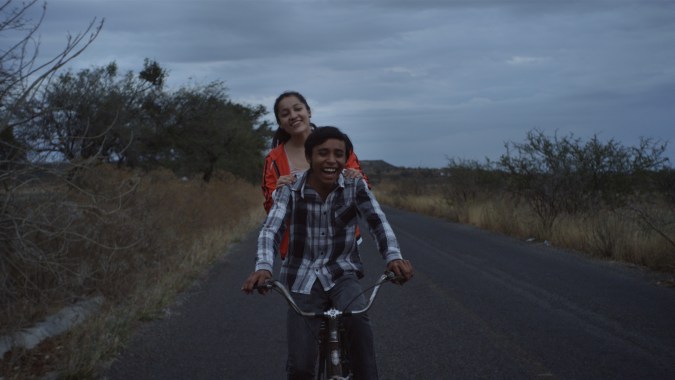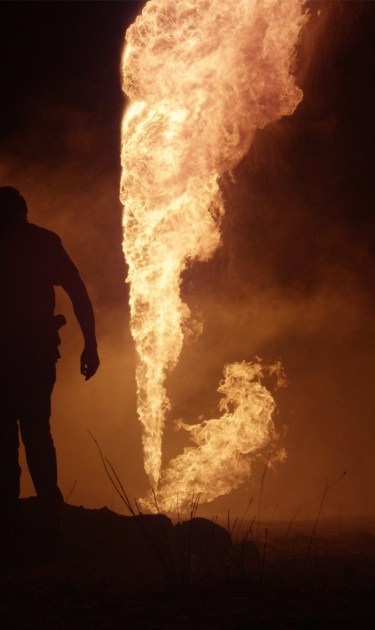The original title for Edgar Nito‘s debut film has a slang feel that its English translation lacks. The Gasoline Thieves, after all, doesn’t quite have the same ring as Huachicolero. The latter has a rich linguistic history that speaks to adulterated alcohol, a tool for fruit-picking, and also the word for a criminal tapping a pipeline to steal fuel. That “huachicol” (or “guachicol”) also conjures up images of “guachos” (thieves, from the Mayan “waach”) places that titular term in a broader cultural context than Nito’s English title could ever offer. For while The Gasoline Thieves (note also the plural here) centers on a group of such characters in Guanajuato, it is also a dissection of the sociocultural environment that has driven many young men into that line of work.
Fourteen year-old Lalo (newcomer Eduardo Banda) lives a rather modest life. He lives with his working mother in a ramshackle of a house, has a few odd jobs here and there, and finds himself daydreaming about a certain girl while at school (Regina Reynoso‘s Ana). When his mother is strapped for cash while helping family members pay for medical bills and blindly takes the meager earnings he was hoping to use to buy his crush a new smartphone (per her teasing instructions), Lalo decides to approach a group of local huachicoleros. It seems an easy a way to score some cash. Soon, though, he’s in over his head, watching his quaint home life, his budding school romance, and his illegal affairs all crashing together, making him the target of people more dangerous than he could’ve imagined.

Nito, who cut his teeth with a chapter in the Mexican horror anthology México Bárbaro and a short film titled Masacre in San José infuses Huachicolero with an adrenaline-driven rhythm. It may at first look like a coming-of-age tale, but it soon devolves into something much more horrifying. The film eventually becomes a tense-packed thriller whose set pieces — especially one set at night by a burst pipeline lit only by headlights and later a roaring fire — hint at a directorial eye worth paying attention to. As is Juan Pablo Ramírez‘s cinematography. The Mexican DP is on the rise, working on Gael García Bernal’s upcoming Chicuarotes next, and here he shows a great feel for striking imagery and kinetic camera movements, making great use of natural light in the vast expansive vistas in Guanajuato during the day and the terrifying pitch-black darkness of its nights.
Lalo’s story, particularly given the film’s desert landscapes and gritty textures, feels like an old-school Western where lawlessness reigns supreme and where kindhearted young boys cannot escape the brutal violence around them. Much like that old Hollywood genre, though, Huachicolero feels oppressively masculine. Lalo’s entire world is male-driven, composed of either quiet, unassuming men who barely make a living or frenzied, violent ones living on the edge. Unexamined machismo is at the heart of the drama, built into Lalo’s own purview and Nito’s penchant for brutal images. Women, be they mothers or crushes, exist merely to serve the plot. Both, in fact, emerge here as the reasons why Lalo turns to a life of crime. Neither is given enough screen time to further explore their own complex inner lives, the way their own existence remains at the mercy of men around them.

Nevertheless, as a snapshot of an ongoing crisis in Mexico, where the government has led an all-out offense against huachicoleros, Nito’s film is gripping. Muddying the moral questions at the heart of the issue (law enforcement in the film is corrupt and complicit, abetting the very crimes it’s supposed to stop) Huachicolero doesn’t make Lalo neither a victim nor a criminal but something even more tragic, an inevitability.
Huachicolero screened as part of 2019 Tribeca Film Festival.




